2016
Anatomy news from 2016
November 2016
Anatomy@Edinburgh delivers first UK post-mortem reconstruction course
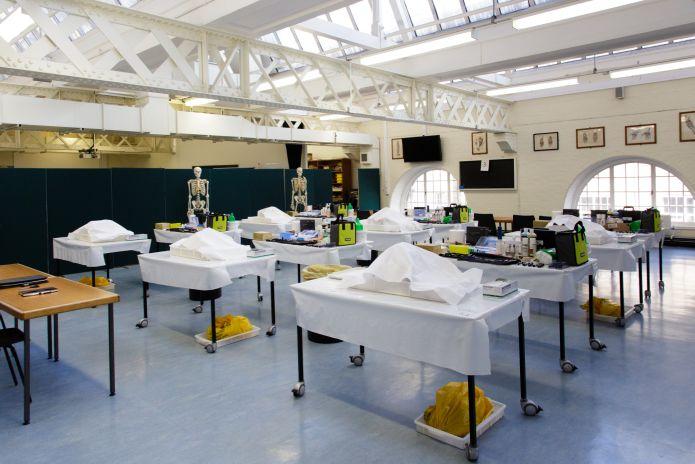
Held for the first time in October, this unique programme - run by Anatomy@Edinburgh in conjunction with William Purves Funeral Directors Ltd - provided a unique opportunity for expert funeral directors to develop specialist practical skills required for successful cranial/facial reconstruction. Aimed at professional embalmers, the week-long course delivered of a series of structured modules specifically designed to teach the practical ability and knowledge necessary to complete reconstruction of a traumatised head. These important skills, not previously available through training courses in the UK, will allow embalmers to offer open coffin viewing for bereaved families under circumstances when previously this would not have been desirable or possible. The first course was attended by some of the country’s most experienced embalmers, receiving very positive feedback:
I felt very privileged to attend not only the first of its kind in the UK, but also to be able to work within the amazing surroundings of the University of Edinburgh
“I feel better equipped to serve families”
“I would have no hesitation recommending this course to anyone wishing to expand their skills.”
“On a personal note I would like to thank the descendants, whose living belief in the value of education have made this course possible”
October 2016
Study from the Gillingwater lab reveals immune system problems in the childhood motor neuron disease Spinal Muscular Atrophy.
Researchers from Tom Gillingwater's lab, again working alongside colleagues from Professor Simon Parson's laboratory at the University of Aberdeen, have published another new paper detailing what goes wrong in the body when someone has Spinal Muscular Atrophy (SMA). The paper has been published in Journal of Anatomy and is available to download from http://onlinelibrary.wiley.com/doi/10.1111/joa.12546/full
New paper shedding light on the childhood motor neuron disease Spinal Muscular Atrophy from the Gillingwater lab.
Researchers from Tom Gillingwater's lab, working together with Professor Simon Parson at the University of Aberdeen, have published a new paper detailing what goes wrong in the body when someone has Spinal Muscular Atrophy (SMA). The paper has been published in Scientific Reports and is freely available to read and download from http://www.nature.com/articles/srep34635
September 2016
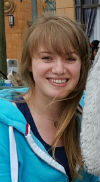
New members of staff
The Anatomy department would like to welcome our new member of staff, Victoria McCulloch, who will be working as the Teaching Fellow in Anatomical Sciences .
The Anatomy department would also like to welcome our new member of staff, Karen Scott, who will be taking on the role of Junior Anatomy Technician in the Anatomy Teaching Lab.
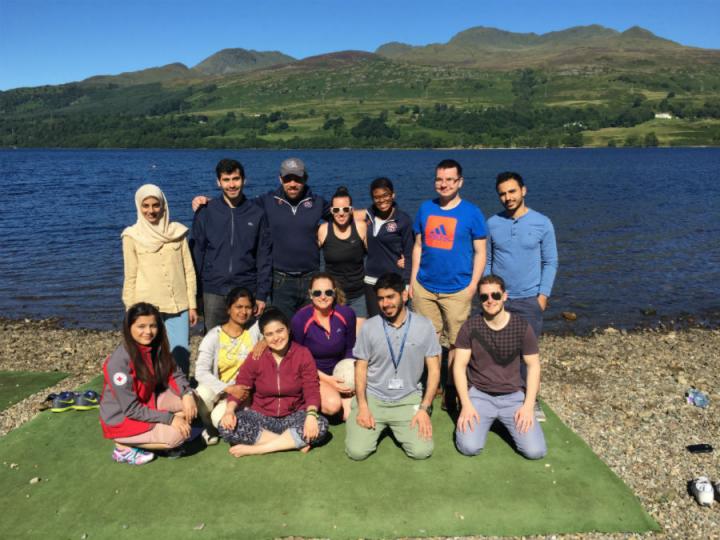
Congratulations to our 2015- 2016 MSc in Human Anatomy Students
Our most recent cohort of MSc students have just completed the course! Here they can be seen relaxing in the sunshine following their dissertation presentations at Firbush, the university’s outdoor centre! It’s been a great year and we offer huge congratulations for completing the course! We also wish them all the best as they move on to the next stage in their careers! Now we look forward to welcoming the new cohort next week!!
Picture courtesy of Isabel Amado.
July 2016
Sameer Dhumale and Abduelmenem Alashkham publication
Mr Sameer Dhumale and Dr Abduelmenam Alashkham have recently published a case report on anatomical variation of the femoral nerve and iliacus within the iliac fossa. The discovery has impacts on clinical medicine, specifically femoral nerve compression. Their work has been published in the Argentine Journal of Clinical Anatomy.
The link can be found here --> https://revistas.unc.edu.ar/index.php/anatclinar/article/view/14625
MORPHOMETRIC PARAMETERS OF THE GLENOID FOSSA WITH THE LABRUM ATTACHED
Dr Abduelmenem Alashkham and his colleagues found that the mean height, width and the level of maximum width of the glenoid fossa with the glenoid labrum attached were significantly greater in males than females which suggests that the increase in height and width due to the glenoid labrum is proportionate to the height and width of the glenoid fossa thus accounting for the difference between males and females remaining significant with or without the glenoid labrum.
https://revistas.unc.edu.ar/index.php/anatclinar/article/view/14428/14782
Gillingwater lab developing new therapies for the childhood motor neuron disease, spinal muscular atrophy (SMA)
Professor Tom Gillingwater’s lab have published a paper in JCI Insight reporting on the development of a new gene therapy approach for the treatment of the childhood motor neuron disease, spinal muscular atrophy (SMA).
The full paper can be downloaded free from this link: http://insight.jci.org/articles/view/87908
Professor Tom Gillingwater elected to Fellowship of the Royal Society of Biology
Tom Gillingwater was elected as a Fellow of the Royal Society of Biology (FRSB) on July 1 2016. The Royal Society of Biology is one of the foremost learned societies in the United Kingdom.
June 2016
Gillingwater lab publish three new papers on the childhood motor neuron disease, spinal muscular atrophy (SMA)
Three new review papers have just been published from Tom Gillingwater's lab reporting on various aspects of SMA.
The first paper brings together evidence from multiple studies using proteomics technology to understand the biology of SMA and was co-authored with colleagues from Keele University (Dr Heidi Fuller) and the Roslin Institute (Dr Tom Wishart). It appears in Neuromuscular Disorders http://www.sciencedirect.com/science/article/pii/S0960896616300050
The second paper is a commentary article concerning the economic costs of SMA, published in the Journal of Medical Economics. http://www.tandfonline.com/doi/abs/10.1080/13696998.2016.1202833
The third paper (co-authored with Hannah Shorrock, a PhD student from the Gillingwater lab) provides an overview of the development of therapies for SMA and will appear soon in the European Medical Journal.
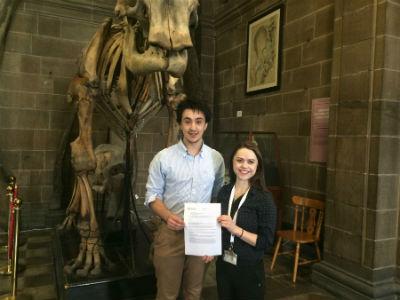
Principal's Teaching Award Scheme
Dr Jenna Langschmidt and third year medical student Julian Camilleri-Brennan were recently awarded a Principal's Teaching Award Scheme (PTAS) for their project entitled " Creating opportunities for students through the development of an anatomy bodypainting workbook."
May 2016
Medical Research Scotland Summer Research Scholarship awarded to the Paxton Lab
Dr Jennifer Paxton has been awarded a second summer research grant to support a student research project over the summer from Medical Research Scotland. Peter Bruce-Wootten, a 3rd Year Biomedical Sciences student at the University of Edinburgh, is going to be investigating a new method of making hydrogels to model the bone-tendon interface.
Anatomical Society Summer Research Scholarship awarded to the Paxton Lab
Dr Jennifer Paxton has been awarded a research grant from the Anatomical Society to support an undergraduate student research project over the summer months. Miriam Graute, currently a 3rd year Medical Sciences student here at the University of Edinburgh, will be working with Jennifer to investigate the usefulness of a new biomaterial in tendon and bone integration.
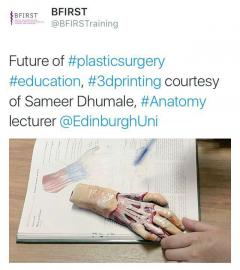
3D Printing
Mr Sameer Dhumale has had his 3D printed hand anatomy models recognised abroad for their use in surgical education and training. The hand models were produced from fresh frozen dissection and subsequent laser scanning and 3D printing. This is their first use by the British Foundation for International Reconstructive Surgery and Training (BFIRST), and they were a great success!
See the BFIRST twitter feed at this link - https://twitter.com/BFIRSTraining?lang=en-gb
Gillingwater lab publishes new paper on the role of glial cells in SMA
Professor Tom Gillingwater’s lab have just published a new paper in Human Molecular Genetics reporting on the contribution of glial cells to the childhood motor neuron disease, spinal muscular atrophy (SMA) (Restoration of SMN in Schwann cells reverses myelination defects and improves neuromuscular function in spinal muscular atrophy).
The full paper can be downloaded free from this link: http://hmg.oxfordjournals.org/content/early/2016/05/11/hmg.ddw141.abstract
Dr Abduelmenem Alashkham
Dr Abduelmenem Alashkham and his colleagues have recently published an article about the morphometry of the anterior cruciate ligament attachment sites.
Read the article here - http://www.anatclinar.com.ar/images/stories/vol8num1mar16/OriginalCommunication-AnteriorCruciateLigament.pdf
The Hairy Bikers' Pubs That Built Britain
Prof Gordon Findlater and the Anatomical Museum will feature in the BBC2 programme The Hairy Bikers' Pubs That Built Britain which will be aired on Monday 2nd May 2016 on BBC2 at 6:30pm.
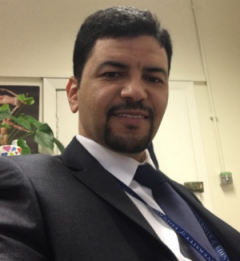
April 2016
Dr Abduelmenem Alashkham
Dr Abduelmenem Alashkham and his colleagues recently had two articles published;
The first article shows that men who were diagnosed with prostate cancer and were on certain types of antihypertensive tablets were less likely to have their cancer return after radical treatment.
Read the article here - http://www.clinical-genitourinary-cancer.com/article/S1558-7673(16)30063-5/abstract
The second article shows that radical surgery of prostate cancer with extended lymph nodes dissection for older men (>70 years of age) appears to have good short-term oncological and functional outcomes compared to radiotherapy and hormonal treatments.
Read the article here - http://www.sciencedirect.com/science/article/pii/S1078143916000843
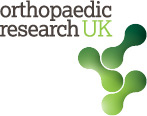
Research Grant Awarded to the Paxton Lab
The Paxton Lab has been awarded a 3-year research grant from Orthopaedic Research UK to investigate repair at the flexor tendon - bone insertion site. This money will be used to support a PhD student and enable us to develop a new model to study bone-tendon interface repair in the laboratory.
The Clinical Anatomy Scheme of Edinburgh
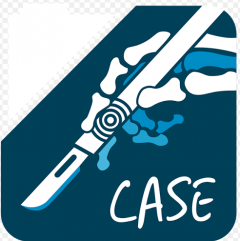
CASE was established in 2014 by a group of trainee surgeons with the valuable support of the Edinburgh Student Surgical Society (ESSS) and the Department of Clinical Surgery at The University of Edinburgh.
CASE has had outstanding feedback from students, with a clear demand for more. In fact 98.8% of students stated the sessions improved their anatomy and 100% rated the sessions as either 'excellent' or 'very good'. Furthermore, our surgical tutors welcome the opportunity to consolidate their operative anatomy through teaching and as such CASE attracts top surgeons who volunteer to teach our various speciality sessions.
So what’s it all about? In two-hour sessions, medical students get invaluable exposure to anatomical teaching by surgeons, with a clear focus on clinical relevance. Sessions last year included upper gastrointestinal, colorectal and urology, orthopaedics, cardiothoracic and vascular anatomy. This year we have additionally run sessions on head and neck anatomy, plastic surgery and breast with plans to develop further speciality sessions in the future.
It is also a fantastic informal opportunity to meet and talk with local trainee surgeons for tips and advice. Plus, every attendee will receive a certificate of attendance at each event.
Finally, did we mention there is free wine and cheese after every event?
So how do you get involved?
Like us on Facebook to hear first about sessions: https://www.facebook.com/anatomyscheme/
February 2016
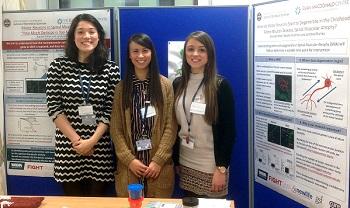
Murray Lab represent the Euan McDonald Centre at the Rowling Clinic Open Day
The Anne Rowling Clinic have hosted an open evening to showcase the research going on at the Euan McDonald Centre for Motor Neuron Disease Research, and at the Anne Rowling Regenerative Neurology Clinic. The Murray lab manned a stall and presented their work to members of the public. Event was really well attended and we loved the opportunity to share our enthusiasm for our research.
Scholarship Available in the Murray Lab for a Masters by Research
The Murray lab has recently been awarded funds from the Gwendolyn Strong Foundation to cover the fees of a Masters Student. The successful applicant will undertake a 12 month research project in the Murray Lab, where research is focused on dissecting disease mechanism in Spinal Muscular Atrophy. Interested parties should send a CV and cover letter to Lyndsay.Murray@ed.ac.uk
New Grant in the Murray Lab
The Murray lab have recently been awarded a grant from Tenovus Scotland. Funds will go towards the purchase of equipment which is crucial for our research into the cellular and molecular basis for motor unit pathology in the child hood motor neuron disease Spinal Muscular Atrophy.
January 2016
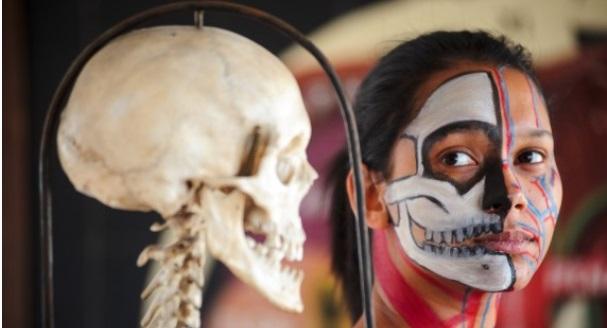
Public Anatomy Workshops
Our ground-breaking series of public anatomy workshops is back in 2016! Visit the link for more information and to book your place.

